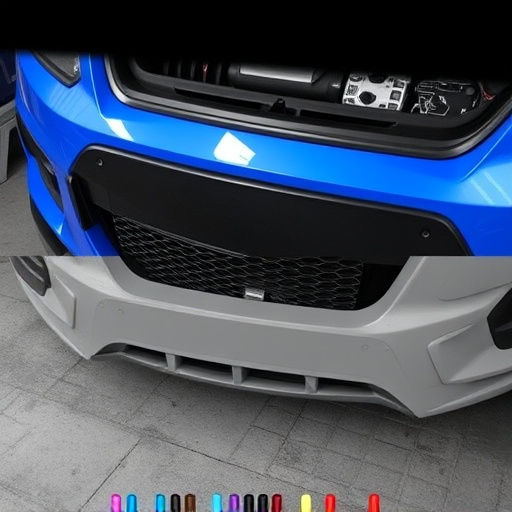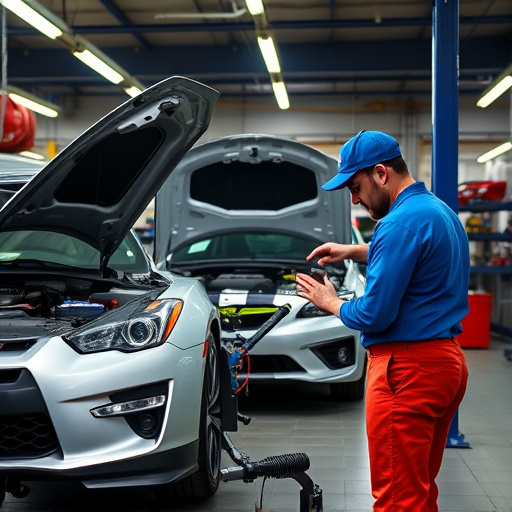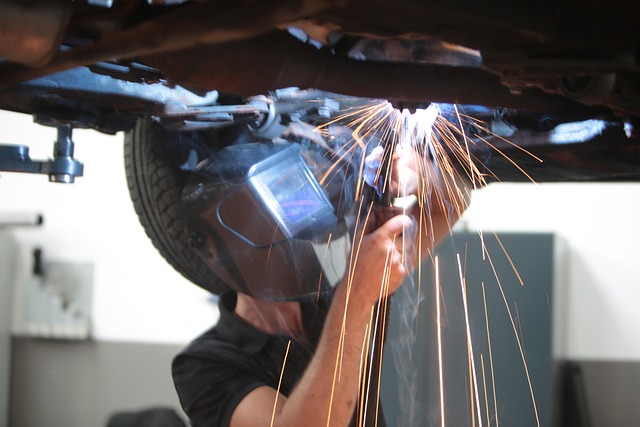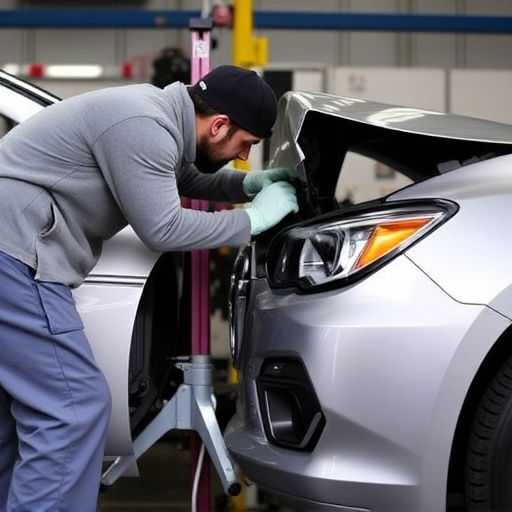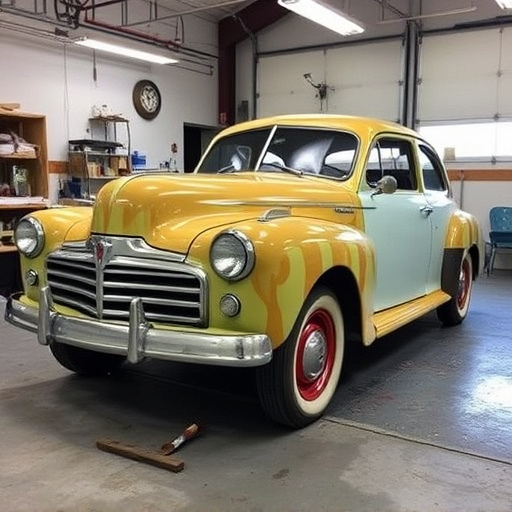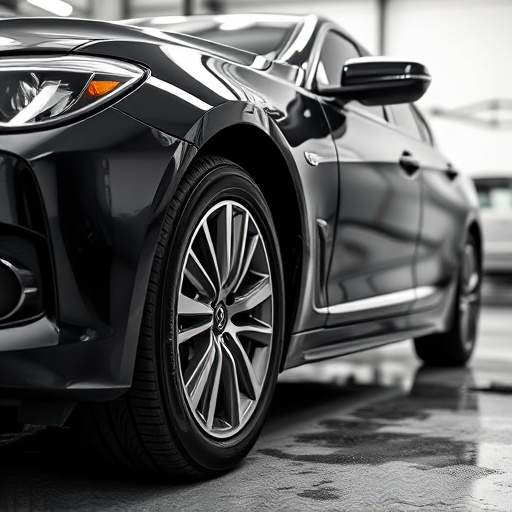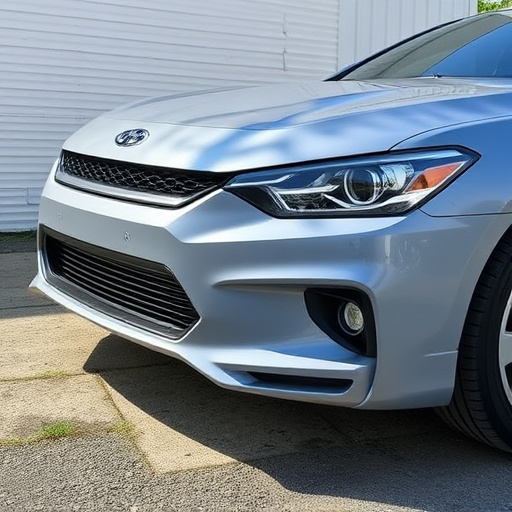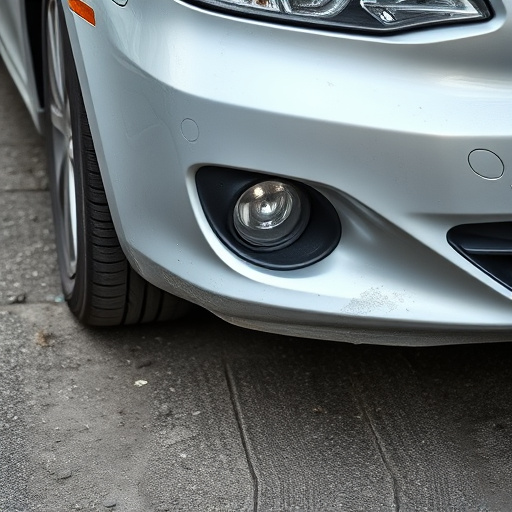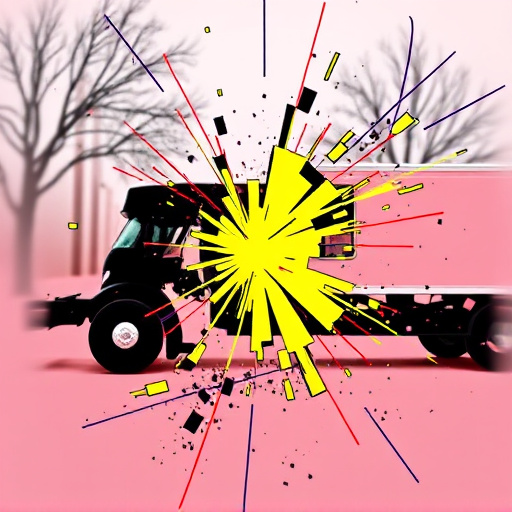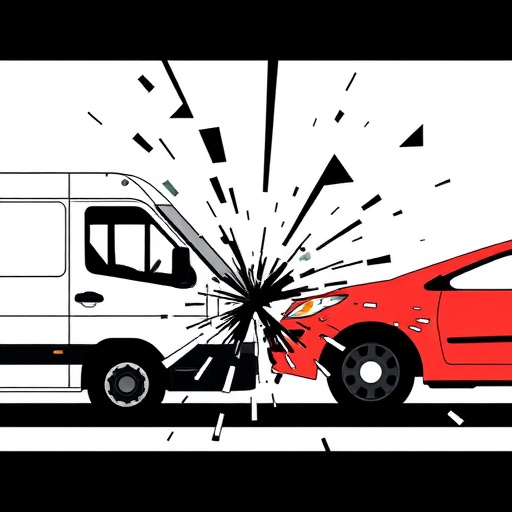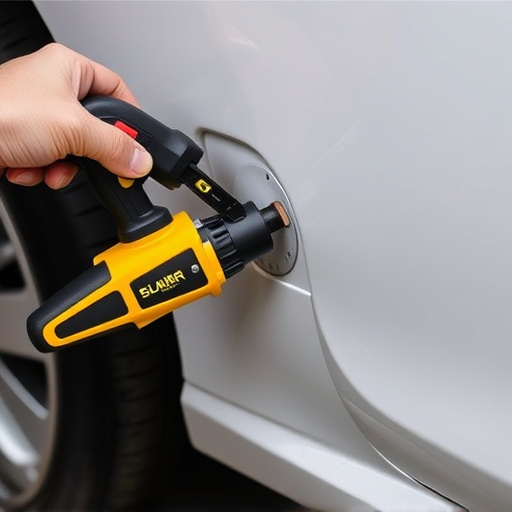Collision repair centers require versatile knowledge of seam sealers for optimal results, selecting the right type crucial for structural integrity and customer satisfaction. Best practices include thorough surface preparation, using material-specific primers, and considering environmental conditions for selection. Safety measures like ventilation, protective gear, and training are vital due to volatile organic compounds (VOCs), with eco-friendly alternatives enhancing sustainability.
In the realm of collision repair, achieving seamless and durable repairs is paramount. This is where seam sealers play a pivotal role, ensuring strength and aesthetics. This article delves into the best practices for using seam sealers in collision repair shops. We explore various sealer types and their applications, provide effective sealing techniques, and emphasize safety measures and environmental considerations. By understanding these practices, shops can enhance the quality and longevity of their repairs, ensuring customer satisfaction.
- Understanding Seam Sealer Types and Applications
- Best Practices for Effective Sealing Techniques
- Safety Measures and Environmental Considerations
Understanding Seam Sealer Types and Applications
Seam sealers come in various types, each suited for specific applications in collision repair. Polyurethane seam sealants, for instance, are renowned for their exceptional strength and water resistance, making them ideal for sealing metal joints on vehicles like Mercedes Benz repairs. On the other hand, silicone-based sealants offer superior flexibility, rendering them perfect for addressing more dynamic sealing requirements often encountered in auto glass repair. Understanding these differences is crucial for choosing the right seam sealer for each job, ensuring long-lasting and effective repairs at collision repair centers.
Choosing the appropriate sealer type not only guarantees structural integrity but also contributes to the overall aesthetics of the repaired vehicle. Whether it’s a precise patch work on a Mercedes Benz or a comprehensive auto glass replacement, the right seam sealer application can make all the difference in both functionality and visual appeal, leaving collision repair centers with satisfied customers.
Best Practices for Effective Sealing Techniques
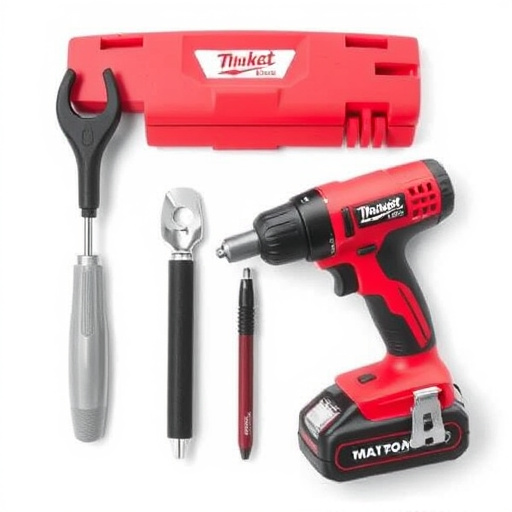
In the realm of collision repair, achieving seamless and durable bonds is paramount to ensuring vehicle quality and safety. Best practices for effective sealing techniques with seam sealers involve several key steps. First, proper surface preparation is crucial; this includes cleaning, degreasing, and ensuring the area is free from any contaminants that could hinder adhesion. Using appropriate primers tailored to the specific material being sealed enhances bond strength, creating a solid foundation for subsequent coatings.
Moreover, selecting the right seam sealer for the job is essential. Auto body shops should consider factors like the type of material, environmental conditions, and desired finish when choosing their sealant. For instance, car paint services often require sealers that withstand UV exposure and maintain color accuracy. In the case of Mercedes Benz collision repair, precision and attention to detail are paramount; high-quality sealers with precise application tools ensure clean lines and a professional finish, enhancing the overall quality of repairs.
Safety Measures and Environmental Considerations
In collision repair shops, implementing robust safety measures around seam sealers is paramount. These products often contain volatile organic compounds (VOCs) that, if mishandled, can expose employees to harmful fumes. Proper ventilation systems should be in place to ensure air quality, and technicians must follow recommended safety protocols, including the use of protective gear like gloves, goggles, and masks. Additionally, training on proper mixing, application, and cleanup procedures is essential to prevent accidental exposure and contamination.
Environmental considerations also play a significant role in best practices for seam sealer usage. Collision repair shops should adopt eco-friendly alternatives where possible to reduce the environmental impact of their operations. Responsible disposal methods for empty containers and proper management of waste materials are crucial. By adhering to these safety and environmental guidelines, collision repair shops can ensure the well-being of their staff and contribute to a greener auto body repairs ecosystem.
In conclusion, implementing best practices for seam sealer usage in collision repair shops is paramount for achieving high-quality, durable repairs. Understanding different sealer types and their applications, adhering to effective sealing techniques, and prioritizing safety alongside environmental considerations are key to enhancing the overall quality of auto body work. By embracing these practices, repair shops can ensure superior results while maintaining a safe and sustainable working environment. Seam sealers, when used thoughtfully, become indispensable tools in achieving flawless finishes that meet both customer expectations and industry standards.
